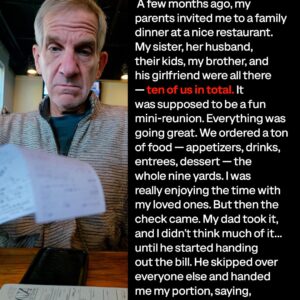Hospitals hold stories that science can’t always explain — places where hope and heartbreak share the same walls.
Dr. Jonathan Mercer, a veteran physician with two decades of experience, thought he’d seen everything.
That changed when he met the patient in Room 312B. The man’s name was Michael Reeves, a young firefighter
who had been crushed during a warehouse collapse and had remained in a coma for three years.
The doctors called his survival a miracle, but no one knew that something far stranger was yet to come.
Michael was known throughout St. Catherine’s Hospital as “The Sleeping Hero.” Visitors left flowers by his
bedside, families whispered prayers for him, and even nurses said his presence gave the ward a quiet sense of hope.
But months later, strange rumors began to spread. Several nurses who cared for Michael reported something
unbelievable — they were all expecting children, despite having no recent relationships. The pattern was
too precise, too consistent, to ignore. When the fifth nurse came forward in tears, clutching a positive test, the hospital erupted in whispers of the impossible.
Dr. Mercer refused to believe in miracles — until the evidence forced him to look closer. Late one night,
he reviewed security footage and saw the nurses sitting quietly beside Michael, talking to him, crying,
or simply holding his hand. There was no misconduct, only compassion. Yet, the medical data defied reason:
Michael’s brainwaves showed bursts of conscious activity, and his body was releasing emotional and even
reproductive hormones. It was as if his mind was reaching beyond its limits — connecting with those who cared for him.
Determined to understand, Mercer and a neuroscientist, Dr. Evelyn Ross, created a synchronized neural test
linking their brains to Michael’s. What Mercer experienced defied the laws of medicine — an otherworldly
space where Michael appeared conscious, standing in light, speaking calmly. “You measure me with machines,”
he said, “but you can’t measure connection. Life responds to life.” Moments later, the vision shattered,
and alarms echoed through the hospital as Michael’s body came to life, his voice whispering one final word: “Her.”
Weeks later, every nurse who had cared for Michael displayed synchronized neural patterns — as if part of
him lived within them. And then, one night, the impossible became real: Michael Reeves awoke. The hospital
sealed Room 312B soon after, but not before five babies were born across the city, each bearing the same
flame-shaped mark above the heart. Dr. Mercer watched the reports in silence, knowing science had no name
for what he had witnessed. Whatever Michael Reeves had become, he wasn’t just alive — he was a bridge between life, love, and something beyond human understanding.





